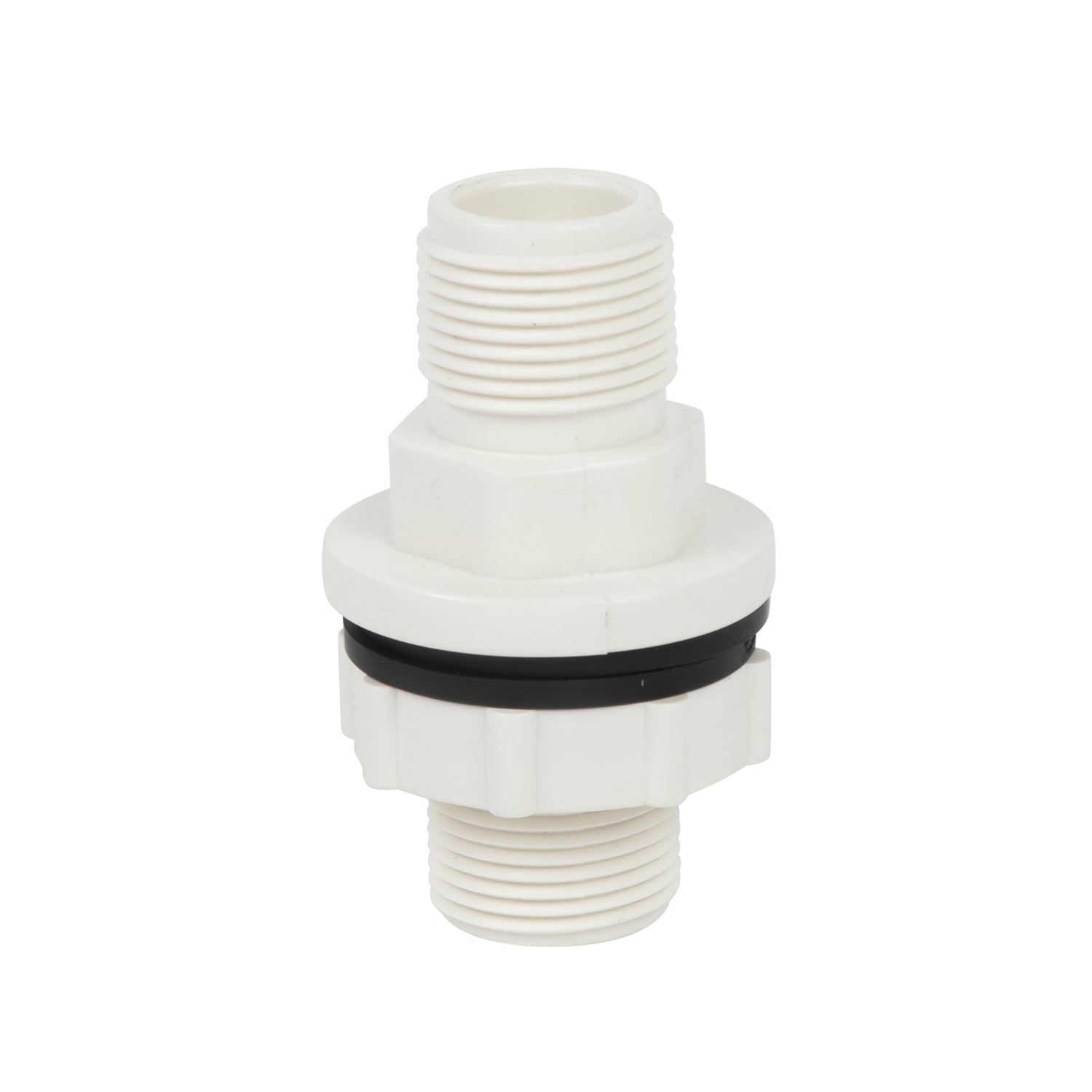


UPVC Ball Valve Specifications
Attribute | Specifications |
Size Range | 1/2" to 8" |
Standards | ASTM, DIN, JIS, BS |
Shape Options | Octagonal ball valve, Compact ball valve |
Connection Options | Threaded connection, Socket connection |
Body Material | UPVC |
Seat Seal Material | TPE |
Ball Material | PP |
Handle Material | ABS |
O-ring Seal Material | NBR |

Introduction
Designed with precision and durability in mind, this valve combines advanced structural innovation with top-grade materials to meet the rigorous demands of chemical plants, oil refineries, and industrial pipelines. As a core product in HJ’s PVC fitting lineup, it stands out for its leak-proof reliability, easy maintenance, and compliance with global industry standards—making it a top choice for businesses seeking long-lasting fluid control solutions.
Characteristic Description
Material Composition
Valve Body: Crafted from high-quality UPVC (Unplasticized Polyvinyl Chloride), offering superior corrosion resistance, chemical stability, and mechanical strength. This material ensures the valve withstands harsh industrial fluids, including acids, alkalis, and solvents, without degradation.
Critical Components: The seat seal is made of TPE (Thermoplastic Elastomer) for tight sealing and wear resistance; the ball is constructed from PP (Polypropylene) for smooth fluid flow and durability; the handle uses ABS (Acrylonitrile Butadiene Styrene) for a non-slip grip and impact resistance; and the O-ring seal adopts NBR (Nitrile Butadiene Rubber) to enhance leak prevention.
Structural Design
The PVC Ball Valve features an innovative integrated structure that sets it apart from traditional ball valves. Unlike conventional designs where O-rings are installed in the handle, HJ’s engineering team has embedded the NBR O-ring directly into the valve body. This mold-assembled sealing system eliminates loose components, significantly boosting reliability and reducing the risk of leakage in high-pressure industrial environments.
Market Research
The global industrial PVC ball valve market is projected to grow at a CAGR of 5.2% from 2024 to 2029, driven by the rising demand for corrosion-resistant, low-maintenance fluid control solutions. Industrial sectors such as chemical processing, petrochemicals, and water treatment are the primary consumers, with a growing emphasis on valves that comply with international standards and minimize downtime. HJ PVC Ball Valve addresses these needs by offering a balance of durability, performance, and cost-effectiveness—filling a gap in the market for reliable valves that can withstand extreme operating conditions.
Key Features
Versatile Sizing & Connection Options
Available in sizes ranging from 1/2" to 8", catering to small-scale piping systems and large industrial pipelines alike.
Two connection types: threaded connection for easy installation in existing pipelines and socket connection for secure, leak-proof bonding with PVC pipes.
Enhanced Sealing & Leak Prevention
Every unit undergoes a rigorous leakage test before packaging. High-pressure air—equivalent to 16pn water pressure—is injected into the valve, which is then sealed and inspected the following day. This strict quality control ensures zero leakage, even in high-pressure industrial applications.
Easy Maintenance & Durability
The detachable ABS handle allows for quick repairs: replace a damaged handle in minutes or add an extra NBR O-ring between the handle and body if leakage occurs. The UPVC body and PP ball resist corrosion and wear, extending the valve’s service life to 8–10 years under normal operating conditions.
Smooth Operation for Large Sizes
For valves 2.5" and larger, HJ has upgraded the mold design to enable dual-direction opening. This innovation not only requires precise component assembly but also reduces torque significantly, making the handle turn smoothly—even for large-diameter valves used in industrial pipelines.
Performance Meets
HJ PVC Ball Valve adheres to global industry standards, including ASTM, DIN, JIS, and BS. These certifications ensure compatibility with international piping systems and validate the valve’s performance in terms of pressure resistance, temperature tolerance, and fluid control accuracy. Whether used in North American chemical plants (ASTM compliance) or European water treatment facilities (DIN compliance), the valve meets regional regulatory requirements.
Customized Service
HJ understands that industrial applications have unique needs, so we offer tailored solutions for PVC Ball Valve:
Size Customization: Adjust valve sizes beyond the standard 1/2"–8" range to fit specialized pipelines.
Material Modifications: Replace standard materials (e.g., NBR O-rings with Viton) for extreme temperature or chemical resistance.
Handle Design: Customize handle color, shape, or grip texture for brand consistency or ergonomic needs.
Packaging Solutions: Branded packaging with installation guides or safety certifications for bulk orders.
FAQ
Can PVC Ball Valve be used with corrosive chemicals?
Yes. The UPVC body, TPE seat seal, and PP ball are chemically resistant to most acids, alkalis, and solvents. For highly aggressive fluids, we offer material upgrades (e.g., Viton O-rings) through our customized service.
What is the maximum pressure rating of this valve?
The valve is tested to withstand pressure equivalent to 16pn water pressure, making it suitable for industrial applications with operating pressures up to 1.6MPa (232psi).
How often should the O-ring seal be replaced?
Under normal operating conditions, the NBR O-ring has a service life of 3–5 years. We recommend inspecting it annually during routine maintenance and replacing it if signs of wear (e.g., cracks, deformation) are present.
Is professional installation required for the threaded connection?
No. The threaded connection is designed for DIY installation with standard plumbing tools. However, for large-diameter valves (4" and above) or high-pressure systems, we advise consulting a professional plumber to ensure proper sealing.




